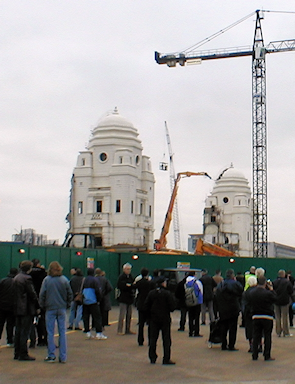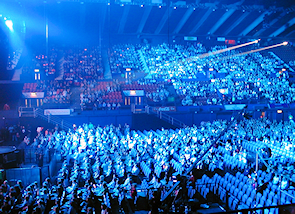Wembley Park
Wembley Park, Brent
The north-eastern quadrant of Wembley
MAJOR UPDATE TO THIS PAGE COMING SOON(ISH)

From the early 19th century Wembley Park was a country estate with a mansion at its centre and grounds laid out by Humphry Repton. The estate was sold in 1881 and part was acquired by the Metropolitan Railway Company.
Wembley Park station opened in 1894, followed two years later by adjacent pleasure gardens. The gardens were the brainchild of the railway company’s chairman, Sir Edward Watkin, who aimed to create London’s greatest leisure attraction, including a tower that would be taller than the Eiffel Tower.
The project was a failure in every respect. The gardens failed to draw sufficient visitors and the property was taken over by the Wembley Park Estate Company. The tower reached a height of 200 feet when problems of finance and subsidence caused its abandonment. Watkin’s Folly, as the tower was dubbed, was pulled down in 1907. The pleasure grounds continued to be used for various events and were chosen as the site for the British Empire Exhibition, which was held in 1924–5.
The exhibition was a mammoth affair that involved the construction of new roads over a wide area, and the widening of existing ones, and the introduction of mains drainage to the district. The improvements enabled the suburban development of the surrounding area at the same time.
The greatest of the exhibition buildings was the Empire (later Wembley) Stadium, which was completed a year before the show, when it staged the FA Cup final between West Ham United and Bolton Wanderers. Thousands of fans spilled on to the pitch before the start of the game, and it required mounted police, and in particular Constable George Scorey on his 13-year-old white horse, Billy, to clear it before the match could begin. Although Scorey was only one of several mounted policemen on duty that day, his conspicuous horse gave the game the nickname the White Horse Final.

Many of the exhibition buildings were afterwards leased for light industrial use but the stadium was retained as the home of English football. The Empire Pool and Arena (now the SSE Arena, Wembley) was built next to the stadium in 1934.
Wembley town hall, later used by the London Borough of Brent, was built on Forty Lane in 1939. By this time the remainder of Wembley Park had been fully developed as a mixed residential and industrial area and most of the wealthy inhabitants had left. The council built the disastrous Chalkhill estate south of Forty Lane in the late 1960s, and this has recently been fully redeveloped.
In the latter part of the 20th century, parts of the exhibition site were converted to retail use, including warehouses and a Sunday market that is said to be the largest in England.
The stadium closed in 2000 and was demolished and rebuilt on a different axis over a protracted period, with a retractable roof and a landmark lattice arch. In 2006 a new footbridge was constructed to connect Wembley Stadium to Wembley town centre. It was named the White Horse Bridge.
In addition to its sporting role, the old Wembley Stadium hosted many live music events, most famously the Live Aid concert of 1985. Wembley Arena continues to serve as a major concert venue.
Among the artists to have released ‘live at Wembley’ albums and/or DVDs – recorded either at the stadium or the arena – are Queen, Michael Jackson, Hawkwind, Beyoncé, Placido Domingo, Pearl Jam, Foo Fighters and Alter Bridge.
Postcode area: Wembley HA9
Station: Jubilee and Metropolitan lines (zone 4) (also Wembley Stadium: Chiltern Railways, zone 4)
